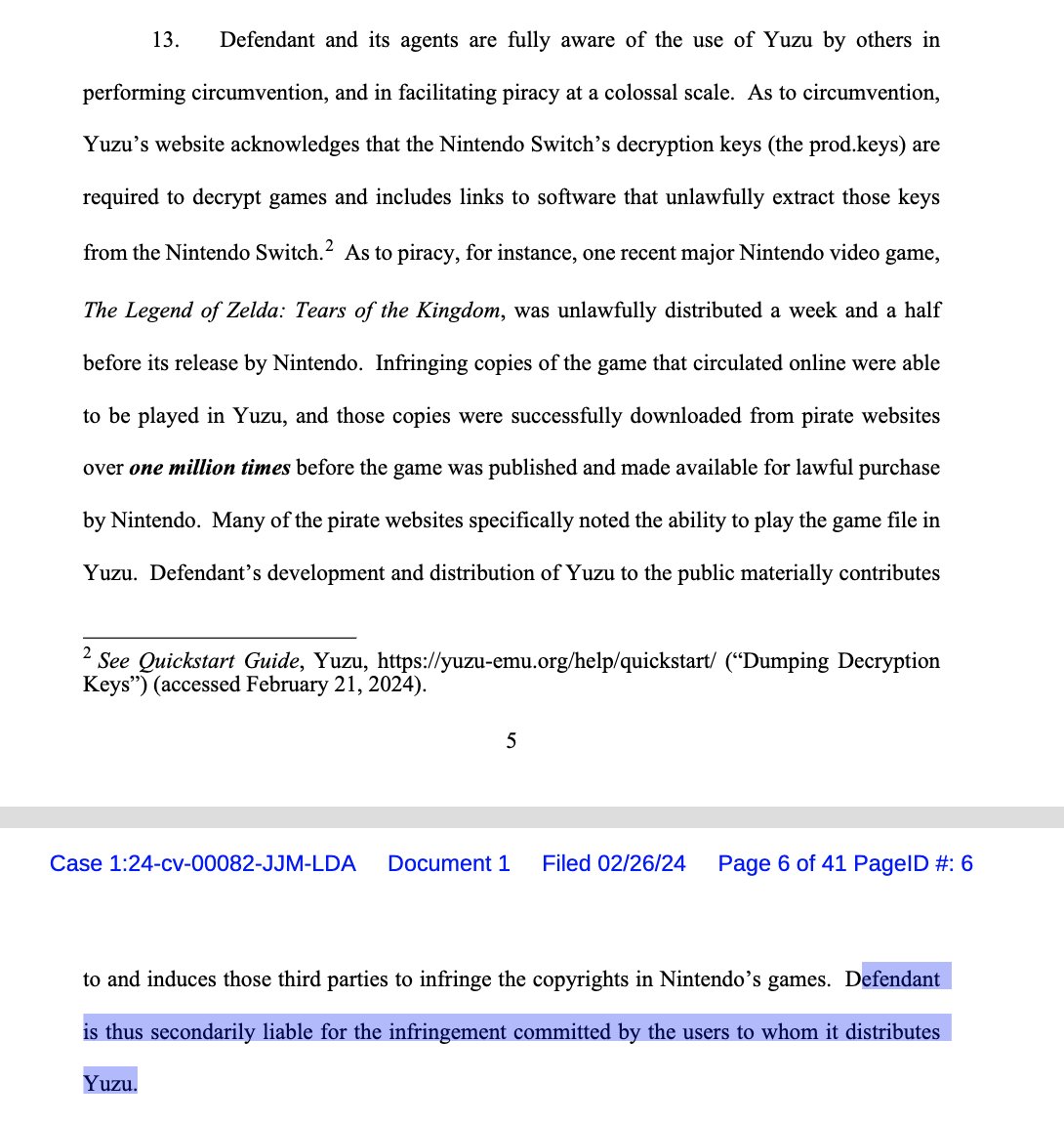This is a meritless case contrived purely for harassment. Emulation software has survived these challenges several times over.
United States
As computers and global computer networks continued to advance and become more popular, emulator developers grew more skilled in their work, the length of time between the commercial release of a console and its successful emulation began to shrink. Fifth generation consoles such as Nintendo 64, PlayStation and sixth generation handhelds, such as the Game Boy Advance, saw significant progress toward emulation during their production. This led to an effort by console manufacturers to stop unofficial emulation, but consistent failures such as Sega v. Accolade 977 F.2d 1510 (9th Cir. 1992), Sony Computer Entertainment, Inc. v. Connectix Corporation 203 F.3d 596 (2000), and Sony Computer Entertainment America v. Bleem 214 F.3d 1022 (2000), have had the opposite effect, which has ruled that emulators, developed through clean room design, are legal. The Librarian of Congress, under the Digital Millennium Copyright Act (DMCA), has codified these rules as allowed exemptions to bypass technical copyright protections on console hardware. However, emulator developers cannot incorporate code that may have been embedded within the hardware BIOS, nor ship the BIOS image with their emulators.




 Nintendo games.
Nintendo games.
 you out of existence if you say anything about ROMs
you out of existence if you say anything about ROMs